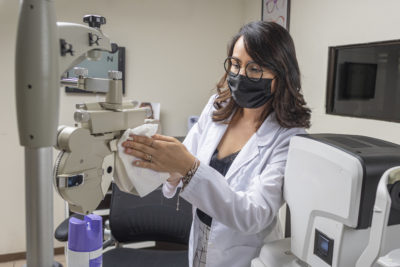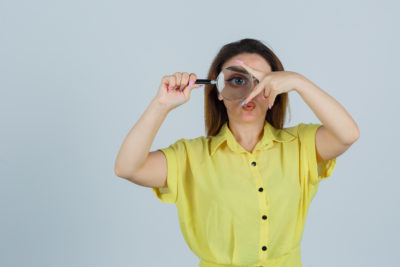Mahesh is a known diabetic and has been managing the disease nicely for the last 20 years. He was immensely proud that unlike others he has always maintained strict discipline about his diabetes medicines, food habits and exercises. He noticed a progressive blurring of vision in both his eyes. He attributed it to cataract and decided to get it operated after the corona pandemic. When blurred vision started interfering with his readings, he decided to get his eye checkup done. He consulted Dr. Yogesh Patil. Dr. Patil evaluated his eyes and retina in detail. He had an early cataract which was not responsible for the blurring of vision. He had developed diabetic retinopathy. Dr. Patil performed the retinal angiography and OCT to determine the right treatment for him. He subsequently received PRP laser and an Intravitreal injection to control the disease progression and to improve the vision. Within a month his vision improved, and he could resume his reading.
Diabetic retinopathy is a retinal disorder seen in patients with Diabetes Mellitus. It affects smaller blood vessels within the retina resulting in bleeding and swelling within the retina. Associated conditions like high BP, kidney disease and high cholesterol levels further worsen the retinal disease. Diabetic retinopathy if left untreated can lead to blindness.
Diabetic retinopathy progresses in severity if left untreated. In the earlier stages’ patient may not experience any symptoms. In late stage disease, patient may experience blurred vision, back spots etc. That is why eye check-up for early detection and treatment are important.
Let us understand the management of Diabetic retinopathy which is the single key determinant. Excellent control of Diabetes is the first step towards the treatment of Diabetic retinopathy. 3 months average sugar level ie HbA1c levels < 7 is an essential determinant of good control. Besides diabetes, other diseases like Hypertension, High cholesterol, and Nephropathy should also be kept under control to prevent further progression.
Besides good blood sugar control, there are different ocular treatment modalities to treat Diabetic retinopathy depending upon the stage of the disease at the time of diagnosis.
- Retinal Laser
- Intravitreal Injections
- Vitrectomy
Retinal Laser: Most common treatment is done with Laser (Retinal laser). Leaking retinal blood vessels in Diabetic retinopathy are treated with laser to seal them. Most commonly used laser is Argon Green laser. The other main aim of Laser treatment to retina is to decrease its oxygen requirement. This reduces formation of leaky blood vessels and prevents further leakage. Depending upon the severity and location of the problem, laser can be done in single or multiple settings.
Intravitreal Injections: Second modality of treatment for diabetic retinopathy is intravitreal injections. Leaking retinal blood vessels in the central part of retina leads to a swelling called Macular edema. It causes blurring of near vision and distortion of images. Macular edema in diabetic retinopathy is treated with intravitreal injection. These injections are given inside the vitreous (internal) cavity of the eye. It is a quick painless procedure which is performed by putting numbing eye drops. In many cases these injections need to be repeated a few times at monthly intervals till the edema settles down. Several injections are available to treat Diabetic Macular Edema (DME). The potency and duration of repeatability is different for these injections. Depending upon the patient’s condition, Retina Specialist decides which injection is suitable for a particular patient.
Vitrectomy: Last resort for treatment of diabetic retinopathy patients is a surgery called Vitrectomy. This is performed for those cases of diabetic retinopathy that have progressed to very advanced stages. Often these are the patients who have not received any prior treatment and/or are beyond treatment with Laser or intravitreal injections. Surgery is done for patients with conditions like vitreous hemorrhage, tractional retinal detachment etc. Surgery is done under local anesthesia and is a day care procedure.
Best way to manage diabetic retinopathy is to get screened for Diabetic Retinopathy yearly, starting from the time of diabetes detection itself. This allows us to detect Retinopathy in early stages before it starts causing vision loss. Earlier one gets detected with Diabetic Retinopathy, simpler and shorter is the treatment and we can prevent permanent vision loss.










